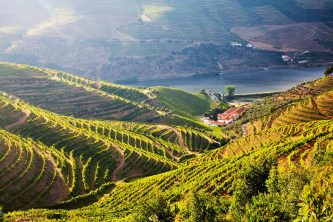@August NZ House & Garden

The idea of a blended wine isn’t news to wine lovers. Wines are individually made then mixed together to achieve the product you see on the shelf. Bordeaux wines are a combination of as many as five red wines to make one signature blend, and even non-vintage champagne is a blended wine where chardonnay pinot noir and pinot meunier wines are used to achieve a house style. In this instance, the blend undergoes a secondary fermentation in the bottle, giving the champagne its signature bubbles.
A lesser-known style of blend is the field blend. This wine is traditionally made from grapes that have been grown together and are then co-fermented. While a traditional blend is mixed in the winery after the fact, a field blend is created in the vineyard before the wine is made. With this comes a level of faith by the winemaker that they have put the right grapes together, and a certain unpredictability about the outcome. This is certainly a case where the vintage matters because the blend can change year on year, meaning you always have a different outcome.
Field blends are sublime, fresh and crisp with layers of aroma and flavour thanks to the multiple grape varieties that feature in the mix. I love this type of blend because I believe it is the ultimate reflection of terroir. It is a true expression of where the grapes are grown, as the focus is not on one particular grape and what that single varietal wine ‘should’ taste like. Instead, it’s a wine made from a mixture of grapes grown together in the same vineyard, reflecting what is truly special about that place.
Field blends are usually found in restaurants, as they are incredible food wines, or in specialist liquor stores. They are worth seeking out – I promise you won’t be disappointed.
A quick guide to field blends
See the Wine Enthusiast guide & the Imbibe Live Guide to field blend wines.

